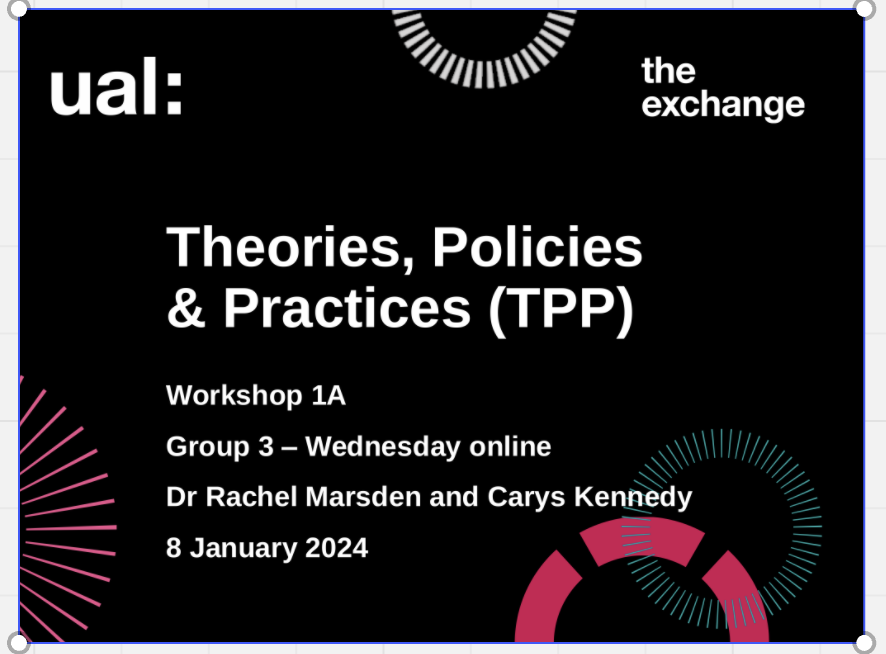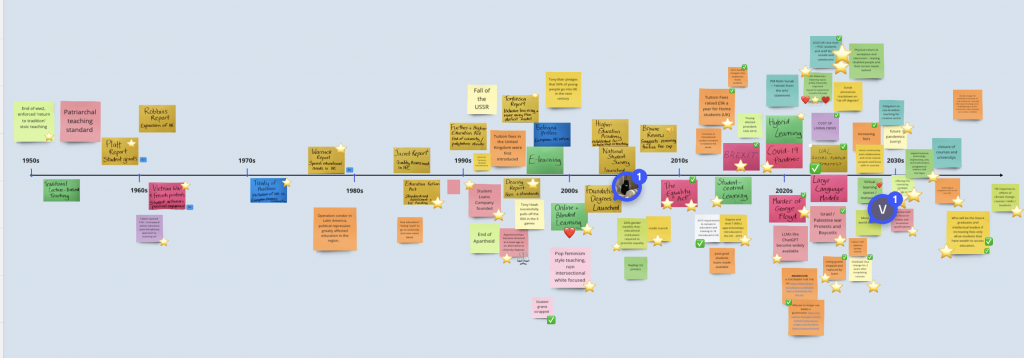
Summary
We worked together to timeline some key milestones in education.

After this we moved to our first small group exercise, we were asked to derive a definition for social justice and list some component of fairer Higher Educations system. As a team we put together these notes:

The definition of social justice in education was identified as: ‘Social Justice Social justice in the context of higher education refers to the pursuit of fairness, equity, and inclusivity within the educational system. It involves identifying and addressing systemic inequalities and barriers that can affect individuals or groups based on factors such as race, gender, socioeconomic status, ethnicity, sexual orientation, and other dimensions of diversity. The goal of social justice in higher education is to create an environment that provides equal opportunities and resources for all students and staff, regardless of their background.’
Reflection
These are the ways in which the DPS programme currently target the aims of Fairness, equity and inclusivity:
- The teaching staff are diverse with race, age, sex, and disability through neurodivergence represented.
- We work with a group called Creative Conscience for our Self-Initiated projects. This organisation aligns is projects with the UNs 17 sustainability goals which promotes social justice in all forms.
- Our industry speakers come from a diverse background
Next steps
The session and set reading have inspired me to consider where I can further promote values of fairness, equity and inclusivity within the programme. These could include:
- Ensure that speakers come from a diverse background and this is monitored formally to ensure that this reflects the demographics of the student body and wider London population.
- Ways in which we engage with students whether online or in person.
- Accommodations made for students who do not have the confidence to speak up in sessions. This was highlighted in the session through Arao & Clemens (2015) where we were prompted to acknowledge and address power dynamics.
- Thinking about Universal Design for Learning and apply this to DPS.
- Making multiple ways that students can access sessions, online and in person
- Multiple ways that they can complete Live Briefs and other projects
- Reimaging assessment
References
Arao, B. and Clemens, K. (2023) ‘From safe spaces to brave spaces’, The Art of Effective Facilitation, pp. 135–150. doi:10.4324/9781003447580-11.
Creative Conscience Awards 2022/23 – Intro (no date) Creative conscience. Available at: https://www.creative-conscience.org.uk/awards/ (Accessed: 01 April 2025).
Zakrajsek, T. (2024) Do we need equity or equality to make things ‘fair’? actually, we need both, THE Campus Learn, Share, Connect. Available at: https://www.timeshighereducation.com/campus/do-we-need-equity-or-equality-make-things-fair-actually-we-need-both (Accessed: 01 April 2025).
Leave a Reply